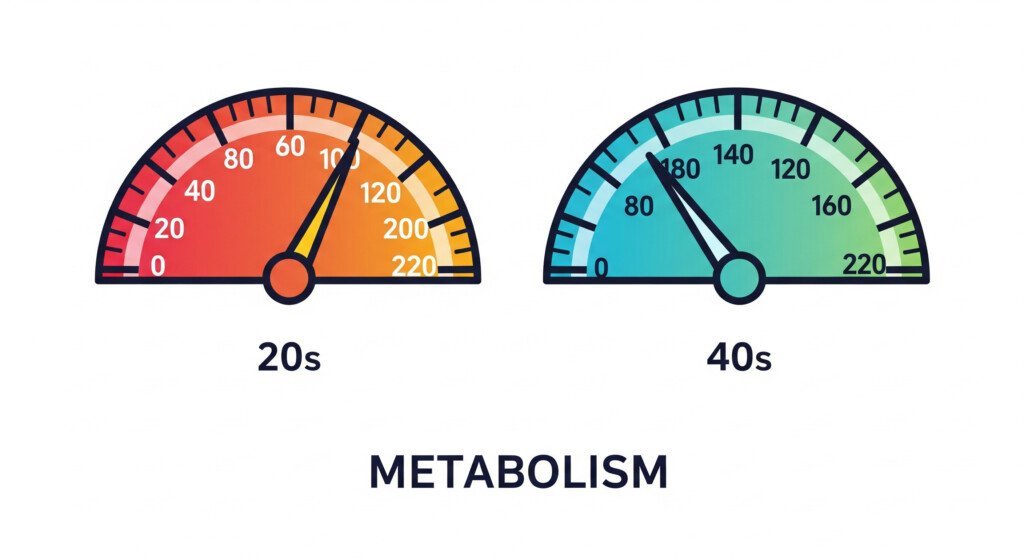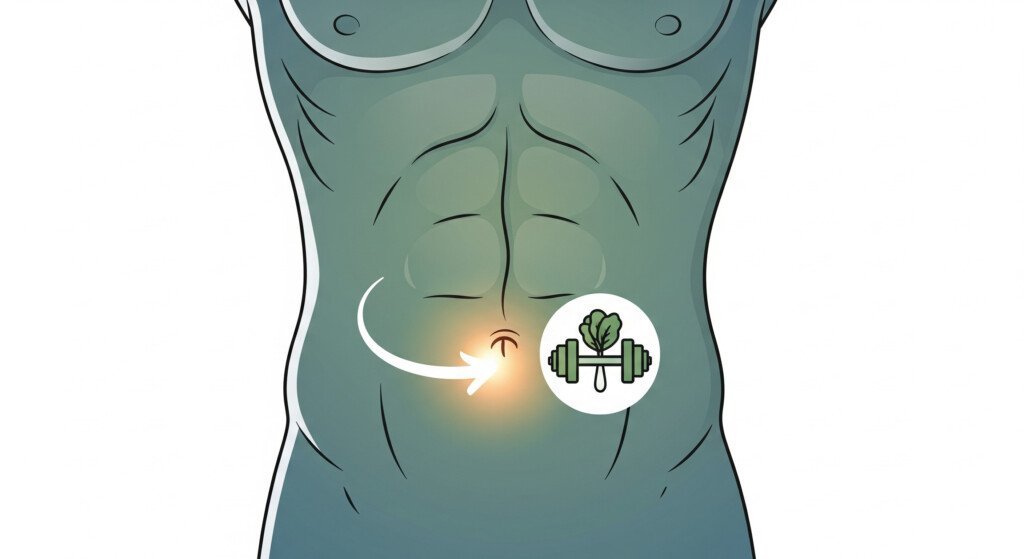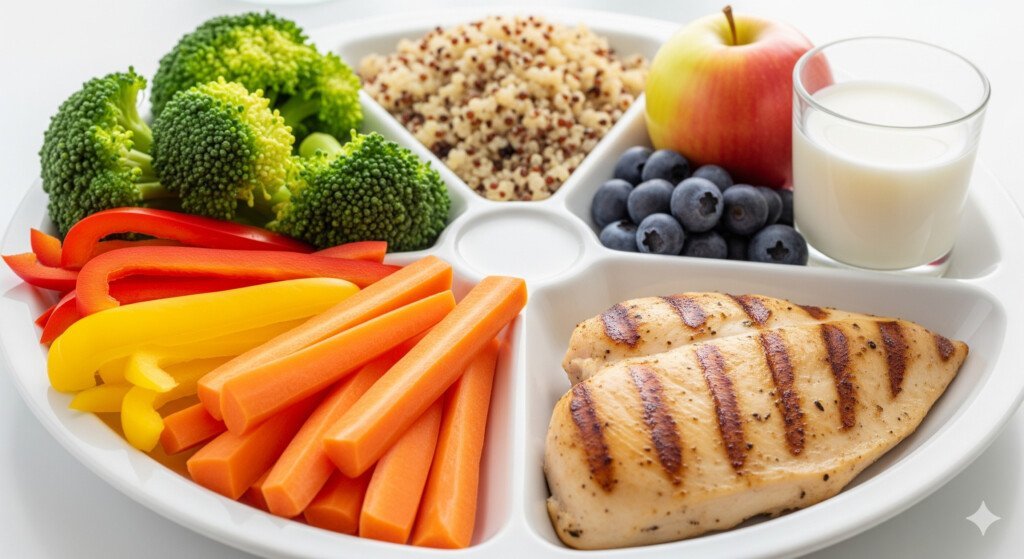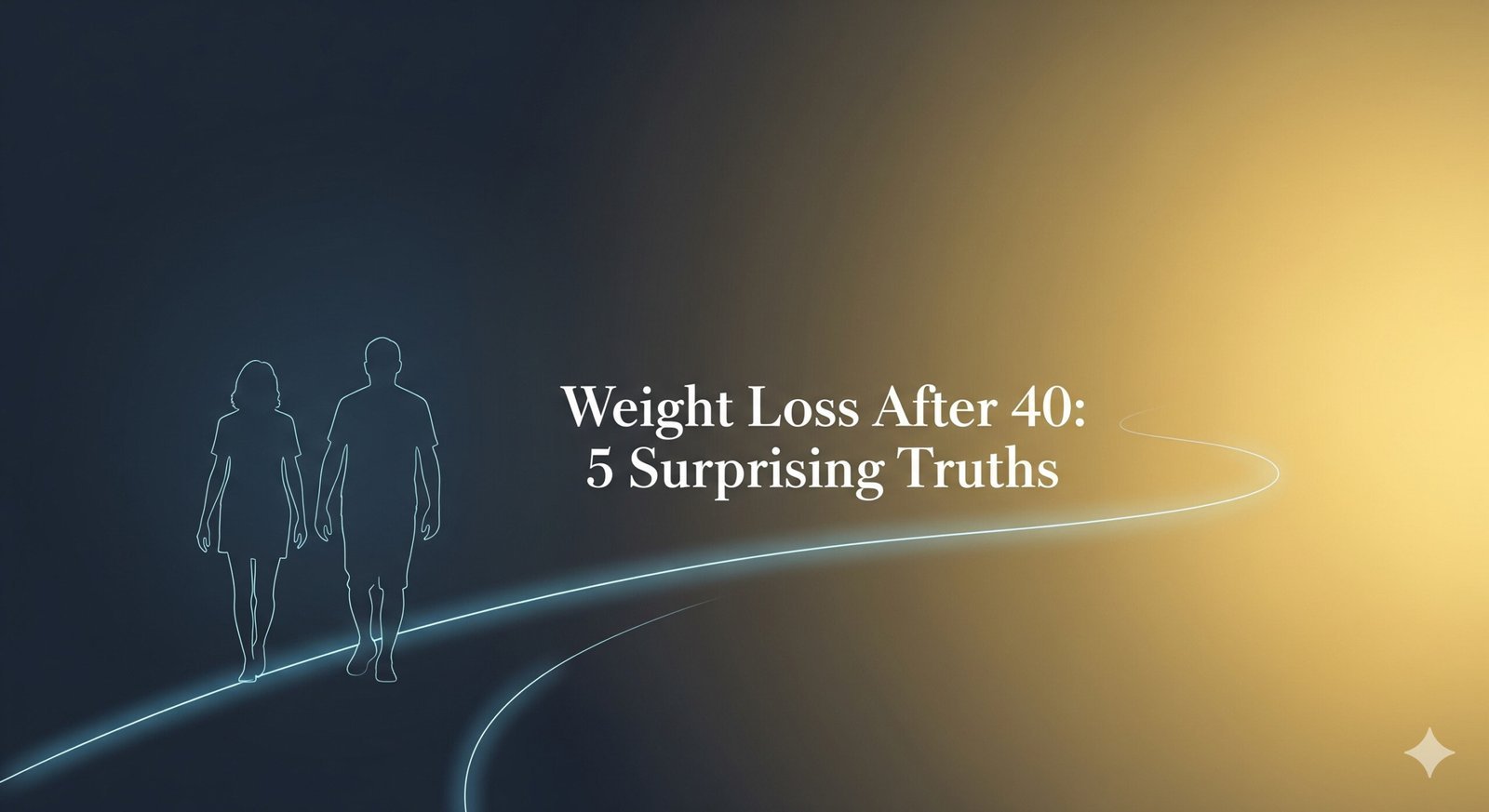Surprising Truths About Weight Loss After 40
As we enter our 40s and beyond, many individuals notice that the strategies that once worked for staying in shape no longer seem to have the same effect. It’s a common and often frustrating experience to find that the number on the scale is slowly creeping up, even if your diet and exercise habits haven’t changed. The challenge of weight loss after 40 is a very real one, driven by a series of natural biological changes that occur within our bodies. This isn’t about a lack of willpower; it’s about a shifting landscape that requires a new, smarter approach.
Thank you for reading this post, don't forget to subscribe!
This guide will break down the key changes that impact your ability to lose weight after 40, from a slowing metabolism to hormonal shifts. By understanding these factors, you can stop fighting an uphill battle and start working with your body. We will provide practical, evidence-based strategies to help you navigate this new phase of life and achieve your health and wellness goals.

Metabolism After 40: The Weight Loss Challenge
One of the most significant factors influencing weight loss after 40 is a change in your metabolism. Your metabolism is the process by which your body converts food and drinks into energy. Starting in our late 30s and early 40s, our metabolism begins to slow down. This means our bodies burn fewer calories at rest and during activity than they used to, making it easier to gain weight even if your calorie intake remains the same.
There are several key reasons for this metabolic slowdown:
- Muscle Loss: A primary driver of a slower metabolism is age-related muscle loss, a process known as sarcopenia. Muscle tissue is more metabolically active than fat tissue, meaning it burns more calories at rest. As we lose muscle, our resting metabolic rate (RMR) declines, making it harder to maintain or lose weight.
- Hormonal Changes: As we’ll explore in more detail, fluctuating hormone levels, particularly a decline in testosterone and estrogen, can impact how our bodies store fat and build muscle. This shift can lead to increased fat storage and a corresponding drop in metabolism.
- Reduced Activity: While it may not always be intentional, many people find themselves becoming less physically active as they get older due to work, family commitments, or joint discomfort. A sedentary lifestyle further reduces the number of calories your body burns each day.
Understanding that your metabolism after 40 is a key factor in weight loss is the first step toward a successful and sustainable strategy. It’s not about working harder but working smarter to counteract these natural changes.

How to Lose Belly Fat After 40
For many people, the most frustrating change they notice in their 40s is the accumulation of stubborn belly fat. This isn’t just about aesthetics; a greater amount of abdominal fat, specifically visceral fat, is linked to a higher risk of heart disease, type 2 diabetes, and other health issues. Knowing how to lose belly fat after 40 is not just a cosmetic goal but a crucial step for long-term health.
The increase in belly fat is directly linked to the metabolic and hormonal shifts that occur with age. A decline in estrogen in women and testosterone in men can lead to a redistribution of fat from the hips and thighs to the abdomen. Stress also plays a major role, as the stress hormone cortisol can promote fat storage in the midsection.
To combat this, a targeted approach is necessary:
- Prioritize Strength Training: Building muscle is the most effective way to boost a slowing metabolism. Incorporate full-body strength training into your routine at least two to three times per week. Muscle mass is your metabolic engine, and revving it up is essential.
- Focus on Fiber: Soluble fiber, found in foods like oats, beans, Brussels sprouts, and avocados, can help you feel full, manage appetite, and has been linked to a reduction in visceral belly fat.
- Manage Stress: Practices like yoga, meditation, and deep breathing can help lower cortisol levels and combat stress-related fat gain. Our guides on holistic-healing offer great tips on these practices.
- Get Quality Sleep: Poor sleep increases hunger hormones and is directly linked to an increase in belly fat. Aim for 7-9 hours of quality sleep each night.

The Best Diet After 40: What to Eat
Navigating diet becomes a new challenge as your body’s needs change. The key is not to drastically cut calories but to focus on nutrient density and metabolism-boosting foods. The best diet after 40 emphasizes quality over quantity and provides your body with the fuel it needs to thrive.
- Prioritize Lean Protein: As you lose muscle mass with age, consuming adequate protein is crucial for preserving it. Lean protein sources like chicken breast, fish, eggs, and legumes are essential.
- Embrace Healthy Fats: Don’t be afraid of fats! Healthy fats from avocados, nuts, seeds, and olive oil can help you feel full and satisfied, preventing overeating. They also support hormonal balance.
- Focus on Complex Carbohydrates: Instead of simple, refined carbs that can spike blood sugar, focus on complex carbohydrates from sources like sweet potatoes, quinoa, and brown rice. These provide sustained energy and fiber.
- Increase Fiber-Rich Foods: Fiber is a powerful tool. It aids digestion, satiety, and can help you maintain a healthy weight without feeling deprived.

Meal Timing and Portion Control
As your metabolism slows, your approach to meal timing and portions becomes even more important. Eating at consistent times each day can help regulate your metabolism and blood sugar. Furthermore, focusing on appropriate portion sizes can prevent you from consuming more calories than your body needs. A good strategy is to use the “MyPlate” method, where half your plate is filled with vegetables, one-quarter with lean protein, and one-quarter with complex carbohydrates.
Sample Foods to Include:
- Lean Proteins: Chicken breast, turkey, salmon, cod, eggs, chickpeas, lentils, Greek yogurt.
- Healthy Fats: Avocado, almonds, walnuts, chia seeds, extra virgin olive oil.
- Complex Carbohydrates: Quinoa, sweet potato, oats, brown rice, whole-wheat bread.
- Fiber-Rich Vegetables: Broccoli, spinach, Brussels sprouts, cauliflower, bell peppers.
- Fruits: Berries, apples, bananas, oranges.
The goal is to create a diet that is not only effective for weight loss after 40 but also sustainable and enjoyable. You can find more tips on how to structure your nutrition in our nutrition blog section.

Exercise After 40 to Lose Weight and Boost Metabolism
As your metabolism naturally slows down, your workout routine needs to adapt. Simply doing more cardio may not be enough. To truly make progress, you need to understand how to use exercise after 40 to lose weight in a way that directly counteracts age-related changes.
A successful exercise plan after 40 should focus on three key areas:
- Strength Training: This is non-negotiable. Building muscle is the number one way to boost your metabolism. Lifting weights, using resistance bands, or even doing bodyweight exercises helps to reverse muscle loss and increase your body’s calorie-burning capacity. Aim for full-body workouts. [External Link to a reputable source on strength training benefits]
- High-Intensity Interval Training (HIIT): While consistent cardio is great for heart health, short bursts of high-intensity exercise followed by rest can be more effective for fat burning. HIIT workouts can dramatically increase your metabolism for hours after you finish, a phenomenon known as Excess Post-exercise Oxygen Consumption (EPOC).
- Flexibility and Mobility: As we get older, our joints and muscles can become less flexible. Incorporating practices like yoga and stretching into your routine can prevent injury, improve range of motion, and support your strength and cardio workouts.
A great routine would be a mix of all three. For example, two to three days of strength training, two to three days of HIIT or steady-state cardio per week, and a daily session of stretching or yoga. This comprehensive approach is key to effective fat burning after 40.

Understanding Hormonal Changes After 40
The hormonal changes that occur as we age are perhaps the most significant, yet least understood, factors influencing our bodies. Hormonal changes after 40 are a major reason why both men and women find it harder to lose weight and maintain muscle mass.
For women, the journey toward menopause brings a decline in estrogen and progesterone. Estrogen plays a vital role in regulating metabolism and fat distribution. As it decreases, fat tends to shift from the hips and thighs to the abdominal area. This can also affect sleep quality and increase stress, both of which hinder weight loss.
For men, testosterone levels begin to gradually decline in their late 30s. Testosterone is crucial for building and maintaining muscle mass and for regulating fat distribution. The drop in this hormone can lead to a decrease in muscle and an increase in body fat, particularly around the belly.
Understanding these changes is key to approaching your weight loss journey with patience and self-compassion. The goal is not to fight these changes but to support your body through them. Holistic practices, such as stress management, can be very helpful.

Fat Burning After 40: A Targeted Approach
Given the unique challenges of a slower metabolism and hormonal shifts, your fat burning after 40 strategy needs to be targeted and deliberate.
- Prioritize Protein: Protein has the highest thermic effect of food (TEF), meaning your body burns more calories digesting it than it does for fats or carbs. It also keeps you feeling full and helps preserve muscle mass.
- Mindful Eating: Pay attention to what you’re eating and when you’re eating it. Mindless snacking can add hundreds of calories to your day without you even noticing.
- Sleep and Recovery: This is often overlooked. Your body burns fat and repairs muscle while you sleep. A lack of sleep can increase cortisol and decrease insulin sensitivity, making fat loss significantly harder.
- Nutrient Timing: Consider when you eat your macronutrients. For example, consuming protein after a workout can help with muscle repair and growth, which boosts your metabolism.
The key to effective fat burning after 40 is a holistic approach that includes diet, exercise, and lifestyle factors. It’s about optimizing your body’s natural processes.

Your Call to Action: Embrace Your New Journey
The journey to weight loss after 40 is a new chapter, not a dead end. By understanding and working with your body’s natural changes, you can achieve remarkable results. It’s an opportunity to redefine your relationship with your health and embrace a more strategic, intentional approach to wellness.
Don’t let the common challenges of aging discourage you. Embrace the power of knowledge and a holistic plan. Your body is capable of incredible things at any age, and by making smart, informed choices, you can continue to thrive.
FAQ
1: How much harder is it to lose weight after 40?
It’s not necessarily “harder,” but it requires a more strategic approach. The metabolic slowdown and hormonal changes mean you can’t rely on the same strategies that worked in your 20s or 30s. Focusing on muscle building and diet quality becomes more important than ever.
2: Is belly fat after 40 inevitable?
No, it’s not. While there is a natural tendency for fat to redistribute to the midsection, you can effectively combat this with a combination of strength training, stress management, and a diet rich in fiber and lean protein.
3: Can supplements help with weight loss after 40?
While no supplement is a magic bullet, some can support your efforts. For example, protein powder can help you get enough protein for muscle preservation, and supplements for vitamin D or magnesium can fill nutrient gaps that affect metabolism. Always consult with a doctor.
4: Is cardio still important for weight loss after 40?
Yes, absolutely. Cardio is vital for heart health and calorie burning. However, combining it with strength training and smart diet choices is the most effective strategy.
5: How important is consistency for weight loss after 40?
Consistency is arguably the single most important factor. Due to a slower metabolism and hormonal shifts, your body is less forgiving of sporadic effort. Consistent, long-term habits in diet, exercise, and sleep are far more effective than short, intense periods of restriction or over-training. It’s about building a sustainable lifestyle, not just following a temporary plan.
Disclaimer:
This post may contain affiliate links. If you purchase through them, we may earn a small commission at no extra cost to you. Also, this content is for informational purposes only and does not substitute professional medical advice.







